Which Plot Structure Device Will Most Likely Be Used to Continue the Stoyr
Every writer has a toolbox. At least, that's what Stephen King thinks. And I tend to believe him. As writers, there are certain tools we can use when crafting our stories, handy tricks, and techniques that will help us construct something amazing. T hough many will claim they are clichéd and contrived, Plot Devices are essential to any screenwriter's storytelling toolbox. In this guide to Plot Devices, we'll examine what they are, why you should use them, and, more importantly, when! — and we'll explore some of the most common Plot Devices in storytelling. A Plot Device is any narrative technique that a writer uses to advance the plot of their story in some way. There are Plot Devices that exist as actual physical objects in the world of the story, while others are more ephemeral storytelling techniques the writer uses to tell the story. Some Plot Devices that can even take the form of a character in the story! In this way, there are two categories of Plot Devices — ones that affect the characters and ones that affect the audience. The distinction between the two is entirely trivial though because, at the end of the day, they're all Plot Devices. What Is a Plot Device?
Why Should You Use a Plot Device?
Plot devices often get a bad rap in the writing world because they can come across as contrived, arbitrary, or lazy. Those things can definitely be true if the Plot Device isn't used effectively.
But Plot Devices have been around as long as stories have been around, and I'd be willing to bet money that the majority of screenwriters have used a plot device or two, even if they weren't doing so on purpose.
Like a trusty hammer or a staple flat-head screwdriver, Plot Devices are something writers can rely on as part of their toolbox. While characters and structure are the toolbox itself, Plot Devices can help a writer tell an intriguing story… if you know when to use them, of course.
When Should You Use a Plot Device?
Great question, thanks for asking!
The not-so-satisfying answer is that it depends entirely on the plot device. A story that warrants an Artifact of Doom will almost certainly be very different than one with a Love Triangle. Not all stories are the same and not all plot devices are created equal, so it should probably be a case-by-case decision.
To give a slightly more helpful answer, I like to abide by a general rule when it comes to plot devices: If your story needs one, you'll know.
Common Plot Devices
Once you stop thinking of Plot Devices as taboo, they can actually be quite fun. Some Plot Devices have become associated with a certain writer or filmmaker, while others have spawned tropes and sub-tropes galore. Let's take a look at some of the most common ones.
Artifacts of Attraction
What's in a name? Well, for this Plot Device… just about everything you need to know. Artifacts of Attraction are just that — objects that, for some reason, are so incredibly attractive to the characters in a movie that the desire to possess or protect them actually fuels the plot.
These items often possess magical powers or have immense financial or cultural value. After all, if an Artifact of Attraction wasn't special, there wouldn't be much of a reason for the characters to fight over it.
Three Amazing Examples
- The Templar's Treasure in National Treasure
- The One Ring in Lord of the Rings
- The Holy Grail in Indiana Jones and the Last Crusade
EVERYTHING YOU NEED TO KNOW ABOUT ARTIFACTS OF ATTRACTION
Artifacts of Doom
Whereas Artifacts of Attraction often offer something positive and powerful, the same cannot be said for Artifacts of Doom . Dun, dun, duuuuuuuun…
This Plot Device can be dangerous and deadly, and has the power to corrupt, manipulate, or kill the characters we love. These objects pose a huge threat if people interact with them.
That interaction is the key to Artifac t s of Doom — if people had just left well enough alone, everything would have been okay. But characters have an unfortunate tendency to get involved in things they shouldn't, and that's why Artifacts of Doom exist.
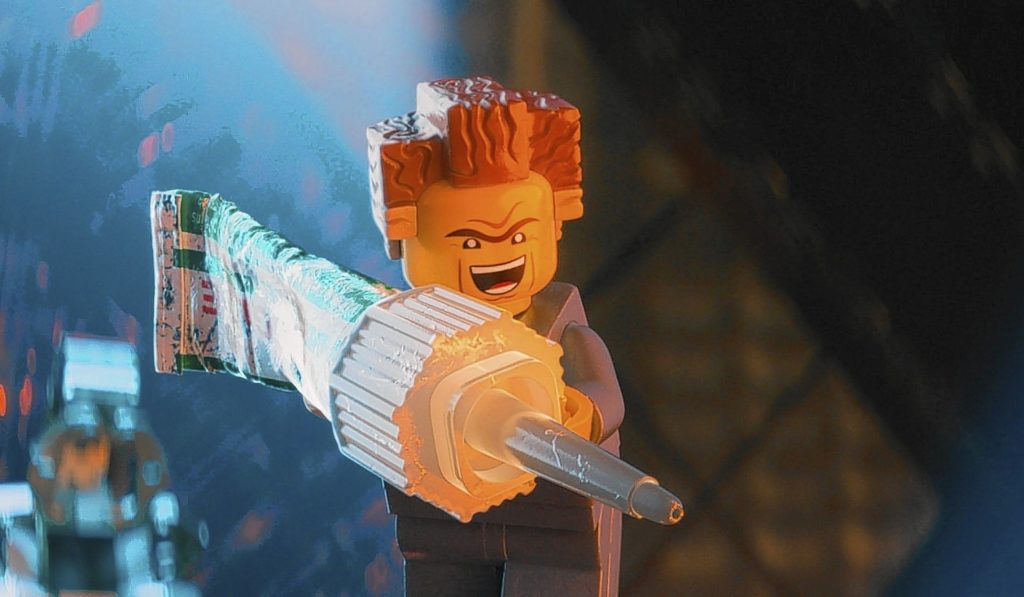
'The LEGO Movie'
Three Amazing Examples
- The Infinity Gauntlet in the Marvel Cinematic Universe
- The Kragle in The LEGO Movie
- Maleficent's spinning wheel in Sleeping Beauty
EVERYTHING YOU NEED TO KNOW ABOUT ARTIFACTS OF DOOM
Chekhov's Gun
"One must never place a loaded rifle on the stage if it isn't going to go off," wrote Russian playwright and short story writer Anton Chekhov.
Chekhov didn't name this Plot Device after himself, but he did originate the storytelling principle that would become known as Chekhov's Gun . In his play "The Seagull," the main character carries a gun at the beginning of the play and uses that same gun to commit suicide in the final scene.
This Plot Device is all about plant and payoff — if the audience's attention is directed to a specific element, that element should be critical in the overall story (because why include it at all if it's not important?).
Good 'ole Anton may have used an actual gun, but a Chekhov's Gun doesn't have to be a weapon at all. This Plot Device can take many, many forms…
Three Amazing Examples
- The Hill Valley clock tower in Back to the Future
- Harlan Thrombey's circular display of knives in Knives Out
- Cobb's spinning token in Inception
EVERYTHING YOU NEED TO KNOW ABOUT CHEKHOV'S GUN
Deus Ex Machina
Sometimes screenwriters back themselves so far into a corner that the only way to save their characters is an act of God. That's the Plot Device known as Deus Ex Machina.
Literally meaning "God out of the machine" in Latin, Deus Ex Machina is when a seemingly impossible problem is solved in an unexpected and unlikely way. It's a storytelling technique that dates back to ancient Greece and has come to be associated with lazy storytelling. Ideally, the solution to the characters' problems doesn't come out of nowhere.
While Deus Ex Machina doesn't occur often in modern movies and TV shows, it can show up as coincidental, accidental, or "breaking the rules" solutions.
Three Amazing Examples
- Dorothy accidentally defeating the Wicked Witch with water in The Wizard of Oz
- The T-Rex that shows up and "saves the day" in Jurassic Park
- Fawkes the Phoenix appearing in the titular chamber to save Harry and his friends in Harry Potter and the Chamber of Secrets
Flashbacks
What's that word for when a movie flashes back to something in the character's past? Oh right! A Flashback .
This is probably the most common Plot Device on this list — we've all seen a Flashback or two (or ten thousand if you watched Lost ) and have a general idea of what they are. The explanation is in the definition, after all.
However common, Flashbacks can get messy if you're not careful. It's critical that you know the difference between the two categories of Flashback (Occasional and Structural) and not use this Plot Device as a storytelling crutch.
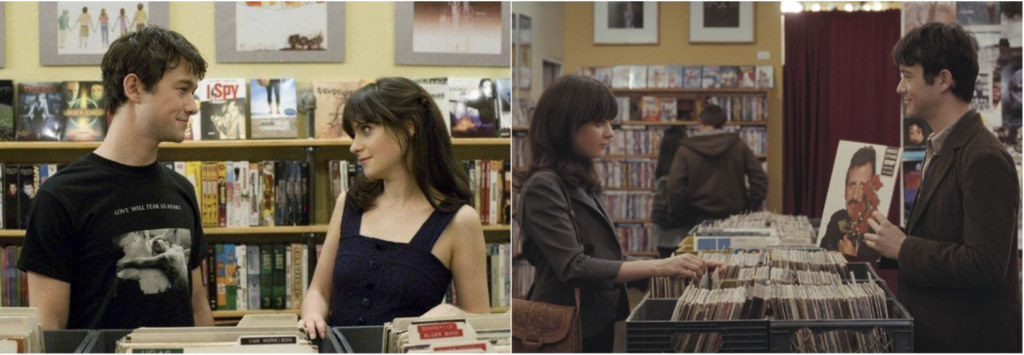
'(500) Days of Summer'
Five Amazing Examples
- Structural Flashbacks in (500) Days of Summer
- Occasional Flashbacks in Moneyball
- Flashback B-Story in The Haunting of Hill House
- In Media Res / "How We Got Here" Flashback in The Emperor's New Groove
- Various Uses in Arrival
EVERYTHING YOU NEED TO KNOW ABOUT FLASHBACKS
Framing Devices
Imagine a picture frame hanging on your wall. The frame is nice, right? But the more important thing is what's inside the frame — the picture or work of art that the frame surrounds. That's essentially what a Framing Device is.
Framing Devices — or Frame Stories — are a way for writers to structure the tale they're telling. It's a Plot Device wherein a writer surrounds their primary story with a secondary one (they frame it).
Framing Devices can be tricky, but they can also be incredibly effective depending on how you use them within your narrative.
Three Amazing Examples
- The grandfather reading the story of The Princess Bride
- The Nested Story in The Grand Budapest Hotel
- The documentary interview-style Frame Story of I, Tonya
EVERYTHING YOU NEED TO KNOW ABOUT FRAMING DEVICES
Love Triangles
You know the drill. Boy loves girl. Another boy also loves the same girl. Girl… has to choose which boy she truly loves and wants to ride off into the sunset with.
This is the Love Triangle , a romantic situation involving more than two people. Yes, there can be love rectangles and pentagons and dodecahedrons… to keep things simple, if it's a romance and there's more than two, it's a Love Triangle .
Love Triangles are inherently unstable, which creates both external and internal conflict and provides a basic arc for the story structure. But the Love Triangle can't be the only thing holding up your story — the characters have to be the foundation and the load-bearing walls, the Love Triangle is simply there to give the story some shape .
Three Amazing Examples
- Rick Blaine, Ilsa Lund, and Victor Laszlo in Casablanca
- Eilis, Tony, and Jim in Brooklyn
- Christian, Satine, and the Duke of Monroth in Moulin Rouge!
EVERYTHING YOU NEED TO KNOW ABOUT LOVE TRIANGLES
MacGuffins
Alfred Hitchcock presents… the MacGuffin , a Plot Device that is often as mysterious and beguiling as the plot of the whodunit.
A MacGuffin is something — a statue, stack of cash, shrink ray, or giant sapphire necklace — that is absolutely crucial to the plot but has no real impact on the story.
Basically, MacGuffins have no intrinsic value themselves and add no meaning to the story, but they are entirely responsible for fueling the plot and the characters.
There's some controversy around MacGuffins , but the true test is whether or not you could switch the MacGuffin with another object and have the plot remain absolutely the same. At the end of Casablanca , it wouldn't have mattered if Ilsa and Laszlo were after the letters of transit or Rick's fashionable fedora. All we care about is the love story.
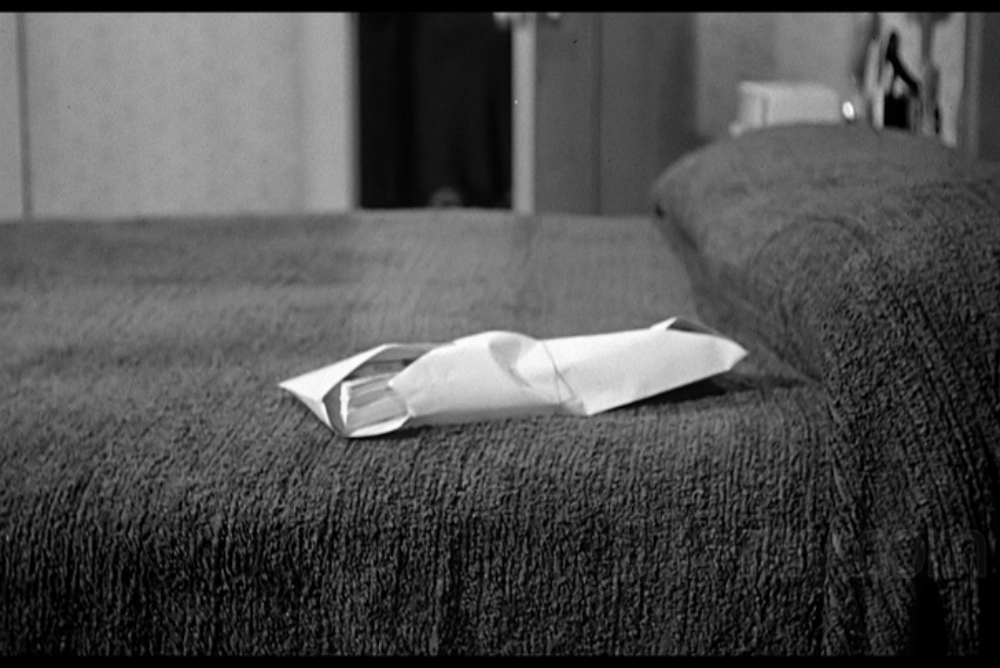
The envelope of cash in 'Psycho'
Three Amazing Examples
- That stolen money in Psycho
- The titular statue in The Maltese Falcon
- The "Rabbit's Foot" in Mission Impossible 3
EVERYTHING YOU NEED TO KNOW ABOUT MACGUFFINS
Meet Cutes
Ah, the Meet Cute. I'm just swooning thinking of this Plot Device, a staple of the romantic comedy genre.
A Meet Cute is the scene in which the two people who will form a romantic couple in the movie or TV show meet for the very first time. These scenes are usually funny, awkward, adorable, or all of the above, and they almost always occur in Act One.
This Plot Device has been used time and time again, so the crafty screenwriter must find a way to subvert expectations with their Meet Cute.
Three Amazing Examples
- Kumail and Emily's Meet Cute in The Big Sick
- Lucy and Henry's Meet Cute (and many subsequent Meet Cutes) in 50 First Dates
- Annie and Officer Rhodes' Meet Cute in Bridesmaids
Montages
Sometimes you need to show that a lot of time has passed. Other times you need to show a boxer going through intense training. Maybe you need to show a couple falling in or out of love, a group planning and practicing an elaborate heist, or that your character has tried on every dress in the store and still hasn't found the right one.
In all of those cases, my friends, just use a Montage .
This handy Plot Device effectively conveys some kind of noticeable change in a story by condensing scenes into a shorter sequence or series of quick shots. Whereas other Plot Devices have rules for when and why to use them, Montages can be used without many qualifications.
Three Amazing Examples
- The Baptism and Blood montage in The Godfather
- The Peach Fuzz montage in Parasite
- The love backstory in Up
EVERYTHING YOU NEED TO KNOW ABOUT MONTAGES
Narration and Voiceover
Narration and Voiceover are two of the more complex Plot Devices on this list. To keep things simple, let's think of it like this… if at any time during a movie or TV show, you can hear a character or narrator speaking but you can't see them speaking those words aloud, it's Narration or Voiceover .
Many writers will tell you to never use Narration or Voiceover but, given how many incredible movies and TV shows effectively employ this Plot Device, I think it's safe to ignore that advice. Just make sure you understand how the Narration/Voiceover is functioning within your story before you type "V.O."
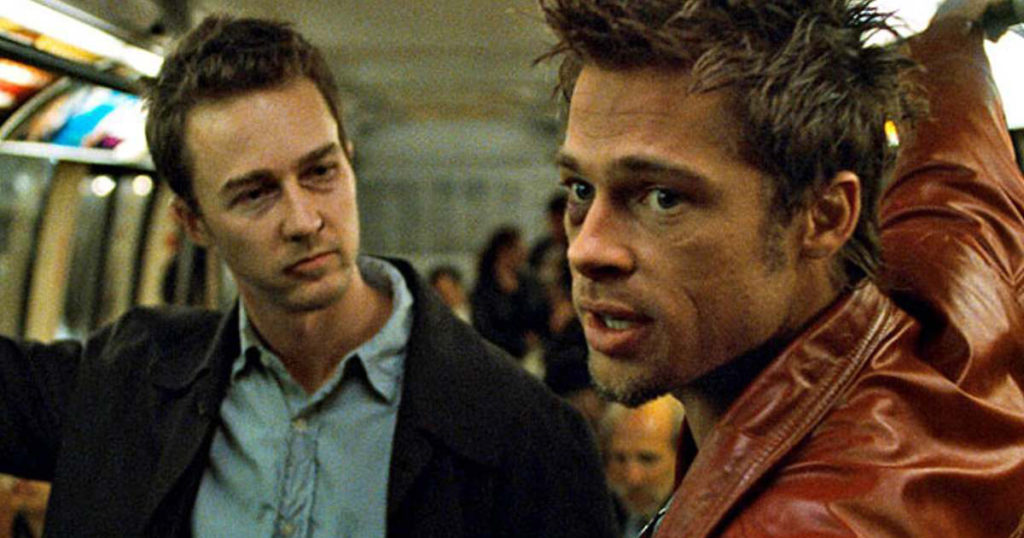
'Fight Club'
Three Amazing Examples
- The Voiceover Narration in Fight Club
- The external narrator in Pushing Daisies
- The complex use of both Voiceover and Narration in Stranger than Fiction
EVERYTHING YOU NEED TO KNOW ABOUT NARRATION and VOICEOVER
Plot Voucher
Sometimes there's a certain item or object that is absolutely crucial to the resolution of the plot. It's something the character probably picks up without much thought along their journey, only for it to come in handy later. That's the Plot Device known as a Plot Coupon.
Plot Coupons are similar but slightly different than MacGuffins — MacGuffins drive the plot, while Plot Coupons are just objects collected along a character's journey through the plot. Oftentimes, characters don't even know that the Plot Coupon is valuable until they end up using it much later in the story.
Three Amazing Examples
- The cursed coins of Cortez in Pirates of the Caribbean and the Curse of the Black Pearl
- The Rita Hayworth poster in The Shawshank Redemption
- The Death Star plans in Star Wars: A New Hope
Red Herrings
Smell something fishy? It's probably a Red Herring .
This Plot Device is common to the mystery, thriller, and sci-fi/fantasy genres, but nowadays can be used in just about any kind of story to distract from a big reveal.
Red Herrings are essentially false clues — people, information, objects, events, a filmmaking element that misleads the characters or the audience and distracts them from what's really going on.
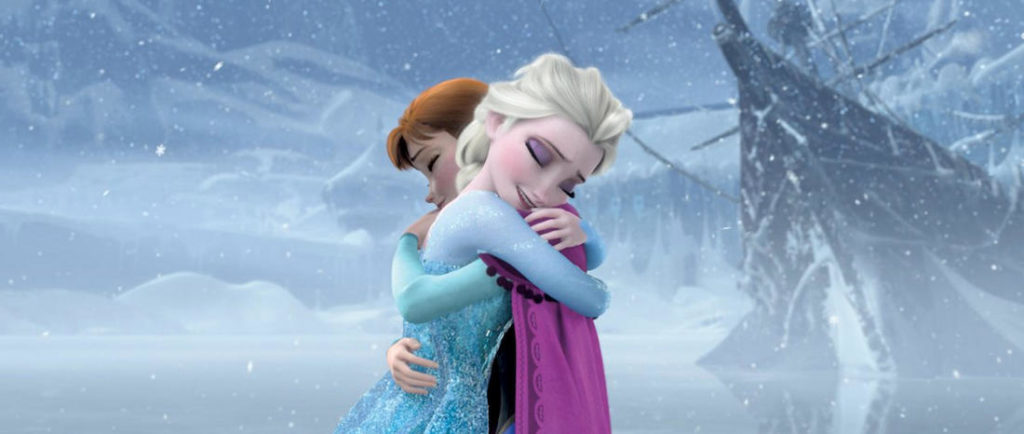
'Frozen'
Three Amazing Examples
- True love in Frozen
- The stolen cash in Psycho
- Racism in Get Out
EVERYTHING YOU NEED TO KNOW ABOUT RED HERRINGS
---
Plot Devices may seem taboo in the screenwriting world, but they're much more common than you think.
And when used effectively, they can elevate and enhance your stories in unforgettable ways.
 Britton Perelman is a writer and storyteller from the middle of nowhere, Ohio. She's had jobs in travel writing, movie trailers, and podcasting, and is currently getting her MFA in Screenwriting at the University of Texas at Austin. When not writing, Britton is most likely belting along to Broadway musical soundtracks, carefully making miniature bookshelves, or napping with her dog, Indiana Jones. Find more of her writing on her website or follow her on Instagram.
Britton Perelman is a writer and storyteller from the middle of nowhere, Ohio. She's had jobs in travel writing, movie trailers, and podcasting, and is currently getting her MFA in Screenwriting at the University of Texas at Austin. When not writing, Britton is most likely belting along to Broadway musical soundtracks, carefully making miniature bookshelves, or napping with her dog, Indiana Jones. Find more of her writing on her website or follow her on Instagram.
Source: https://screencraft.org/blog/a-screenwriters-guide-to-plot-devices/
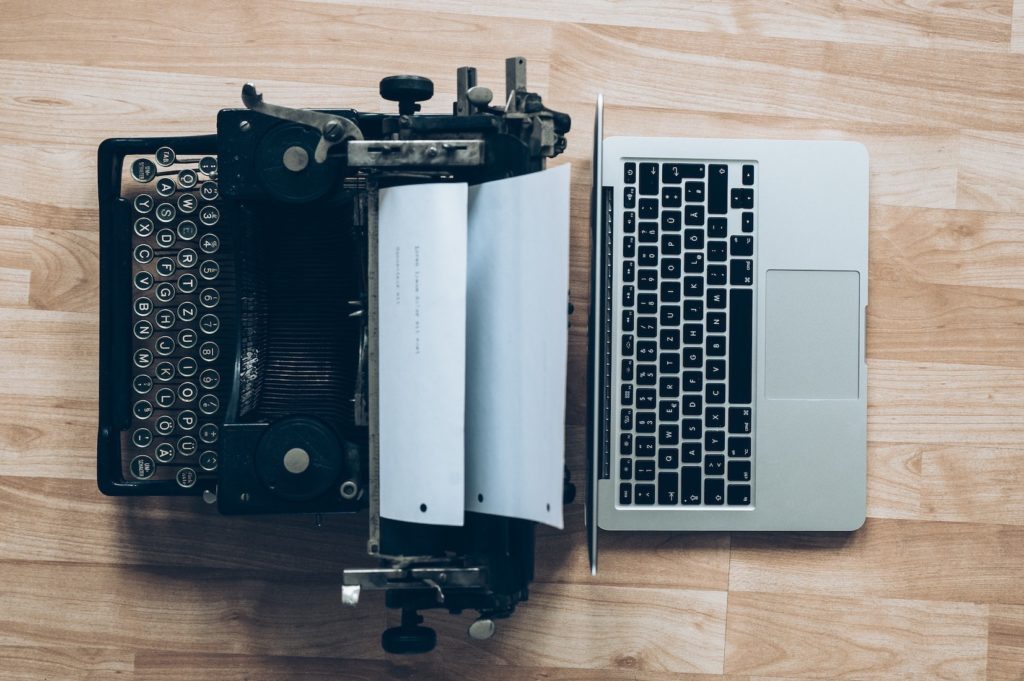
0 Response to "Which Plot Structure Device Will Most Likely Be Used to Continue the Stoyr"
Post a Comment